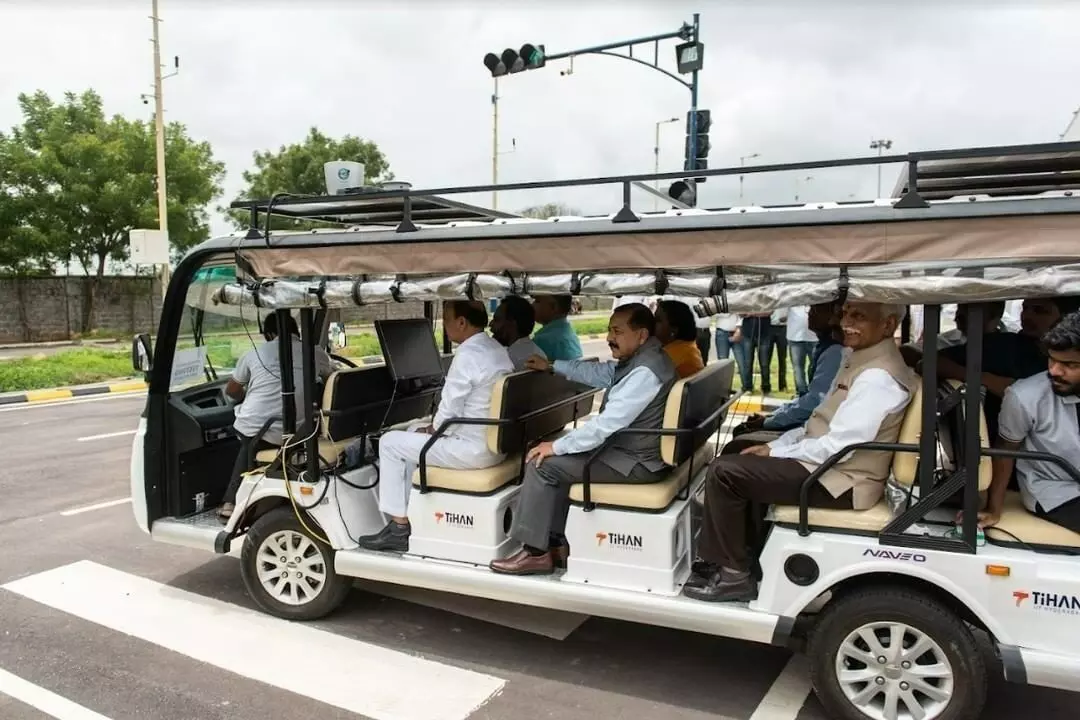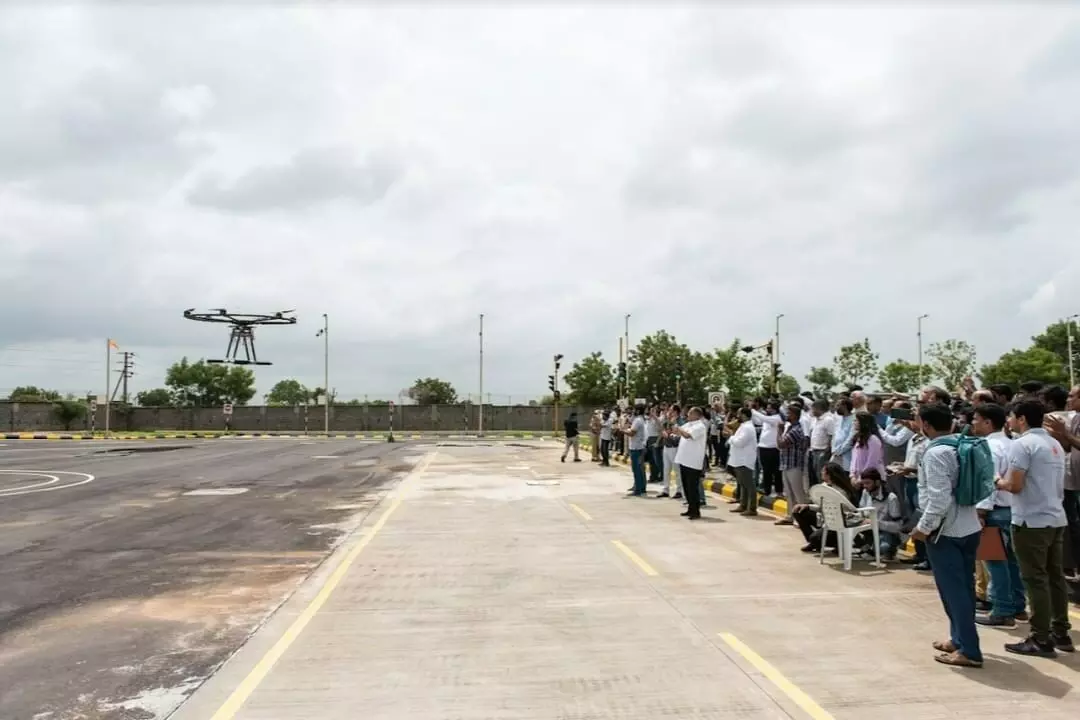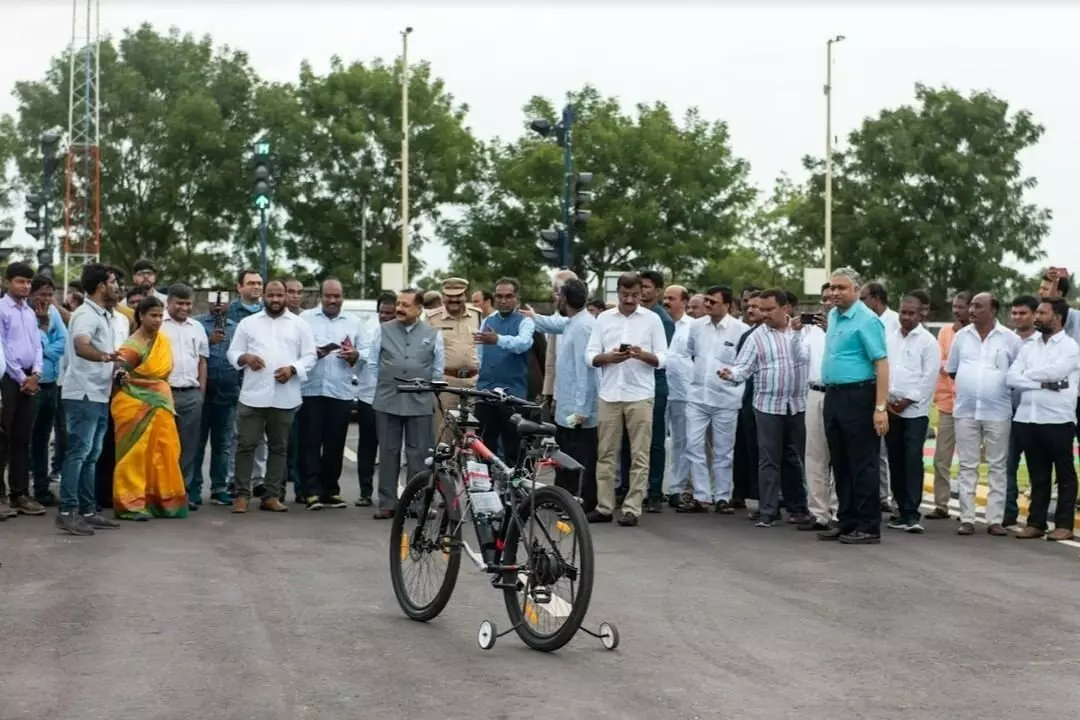Driverless car tested in IIT-Hyderabad
All these fantasies were realised on the campus of our very own Indian Institute of Technology-Hyderabad.
HYDERABAD: A driverless golf cart carried a team of people and hit a road-divider and intelligently halted. The signalling system, pedestrians and cyclists – all artificial -- were "talking" to a driverless car's automated navigation system.
All these fantasies were realised on the campus of our very own Indian Institute of Technology-Hyderabad.
For decades, people have been fantasising about 'flying cars' and 'automatic vehicles' as the future. While Tesla launched driverless cars quite sometime ago, Google's Dezeen (made by a spun-off company, Waymo) has been tested and is still under development.
The prestigious IIT-H is developing an answer to these American companies.
The IIT-H also demonstrated, besides driverless vehicle, an automated drone and a self-ridden cycle. Researchers of IIT-H also showcased macro-drone and nano-drone models which would be the future of smart mobility solutions.
With the launch of TiHAN (Technology Innovation Hub on Autonomous Navigation), a testbed for autonomous navigation at IIT-H for both Ground and Aerial mobility, the future for unmanned vehicles looks bright.
Funded by the Union Ministry of Science and Technology, it is an initiative that would make India a global player in the next-gen 'smart mobility' technology. TiHAN would enable futuristic development in India. Researchers of IIT-H from various engineering backgrounds had together set up TiHAN which was also recognized as a Scientific and Industrial Research Organisation (SIRO) by the Union Department of Scientific and Industrial Research.
The hub would work in the field of Autonomous Navigation Systems for Agriculture, Infrastructure monitoring, Surveillance, Environmental Monitoring and other areas.
What is Autonomous Navigation?
Autonomous navigation is the ability of a vehicle/bot to learn and execute movement of its path without any human intervention.
The technology is built on deep neural networks. It needs cameras, ultrasonic sensors and radars. The combination of these sensors and cameras, backed by softwares, give an object the ability to map its surroundings and travel autonomously.
For commercialising Autonomous Navigation in vehicles the most essential factor is their effectiveness in realistic conditions. Thus, it is crucial to evaluate these new technologies in a safe, controlled environment before deploying them.
India's first Terrestrial and Aerial Autonomous Navigation testbed
Giving a competition to satellite and terrestrial autonomous navigation systems which are being developed across the world, TiHAN is India's first testbed for Autonomous Navigation which would focus on both Indian and Global market. It includes simulation platforms that would allow for non-destructive testing of algorithms and prototypes developed for Autonomous Navigation in terrestrial vehicles and aerial vehicles (drone models).
Research is being conducted on Autonomous Driving Assistance Systems (ADAS) like emergency brakes and Automatic Cruise Control (ACC) for terrestrial vehicles, while for aerial systems, safe-landing systems, and navigation systems are being set up.
In terrestrial systems, a few interesting examples of these scenarios are: smart cities, signalised intersections and the response of autonomous vehicles to them using inbuilt sensors, autonomous vehicle interactions with cyclists and pedestrians, etc.
The testbed also provides dummy signboards, pedestrians, overpasses, and bikers to test all real-world conditions.
Union Minister for Science and Technology Dr Jitendra Singh, along with other officials from IITH, witnessed the live demonstration of a driverless vehicle on Monday on the campus.
Dr Singh said, "The TiHAN-IITH testbed on Autonomous Navigations will allow us to test the next generation autonomous navigation technologies accurately and allow faster technology development and global market penetration."
"We witnessed on January 29, when the 'beating the retreat' was held at Rashtrapathi Bhavan, a program funded by DST and TDB, which showcased the marvel of drone technologies. Today,IIT-H Director Prof. BS Murty and Prof. P Rajalakshmi (Researchers at TiHAN) have shown us how the drone size can be increased so that even humans can be carried in the drone facility. The drone and autonomous vehicle technology are certainly going to be the game-changer, especially when you want to send the vehicles into places where humans cannot enter, where some chemical poisons are coming out, such as the Bhopal gas tragedy. These technologies are going to play an important role," said Secretary of Department of Science and Technology Dr Srivari Chadrasekhar.






